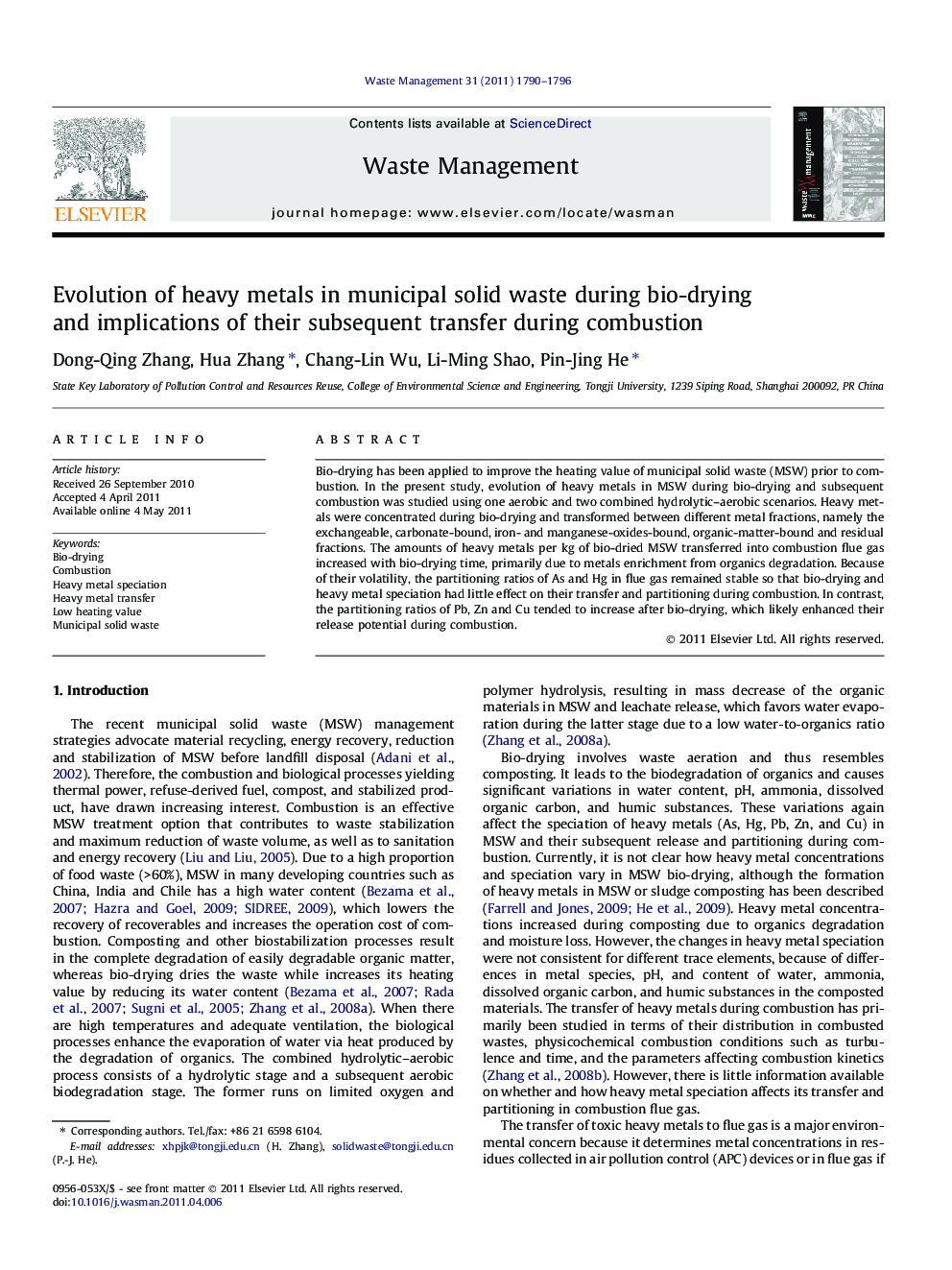| Article ID | Journal | Published Year | Pages | File Type |
|---|---|---|---|---|
| 4471898 | Waste Management | 2011 | 7 Pages |
Bio-drying has been applied to improve the heating value of municipal solid waste (MSW) prior to combustion. In the present study, evolution of heavy metals in MSW during bio-drying and subsequent combustion was studied using one aerobic and two combined hydrolytic–aerobic scenarios. Heavy metals were concentrated during bio-drying and transformed between different metal fractions, namely the exchangeable, carbonate-bound, iron- and manganese-oxides-bound, organic-matter-bound and residual fractions. The amounts of heavy metals per kg of bio-dried MSW transferred into combustion flue gas increased with bio-drying time, primarily due to metals enrichment from organics degradation. Because of their volatility, the partitioning ratios of As and Hg in flue gas remained stable so that bio-drying and heavy metal speciation had little effect on their transfer and partitioning during combustion. In contrast, the partitioning ratios of Pb, Zn and Cu tended to increase after bio-drying, which likely enhanced their release potential during combustion.
